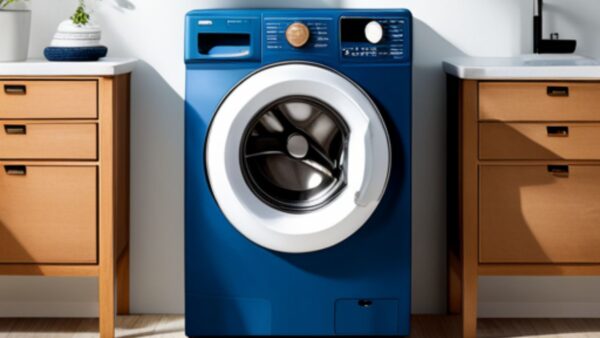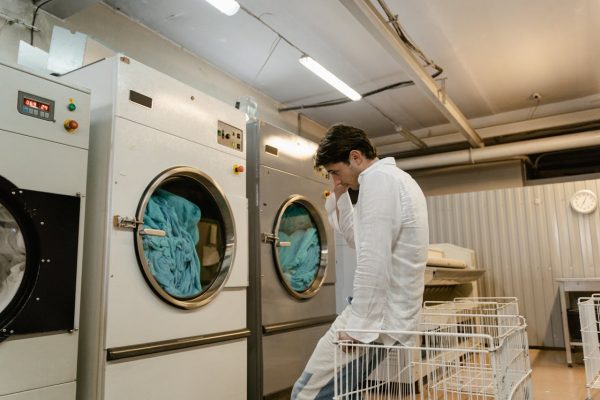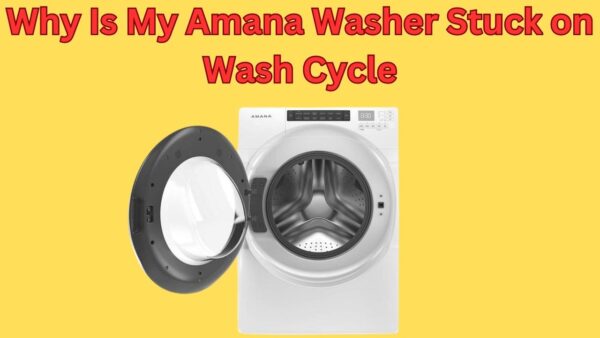Your Kenmore washing machine just quit agitating, and now there’s a pile of laundry giving you the side-eye? You’re not alone—agitation problems are one of the most common issues with washers.
Here’s the good news though—most of these problems are fixable with a little effort and the right know-how.
Fixing this could be an essential game-changer for your laundry routine and save you a massive repair bill.
This guide will help you troubleshoot the problem and get your machine back in top shape.
Below, we’ll break down the most common reasons your Kenmore washing machine isn’t agitating and provide clear steps to fix each issue.
Why is the agitator not working on my Kenmore washer?
The agitator is the heart of your Kenmore washer, and when it stops working, it’s a massive disruption to your laundry routine. Over 20% of washer issues reported annually are tied directly to agitator problems, making it clear this is a common frustration. The most likely culprits? Worn-out agitator dogs, a damaged drive block, or even a faulty motor coupler.
These parts are essential for the agitator’s movement, and when one fails, your washer won’t clean clothes as it should.
The great news? With a quick diagnosis and some game-changing repairs, you can have your machine churning like new again.
Why is my washing machine spinning but not agitating?
By addressing these common issues, you can quickly identify why your washer spins but doesn’t agitate.
These steps will help solve your kenmore washing machine not agitating issues and keep your clothes cleaner than ever!
1. Check the Agitator Dogs
Worn-out agitator dogs are one of the most essential reasons your washer won’t agitate, even though it spins. These small plastic components grip the agitator to help it turn during the wash cycle.
When they wear out, your washing machine might spin but leave clothes poorly cleaned. Inspect the dogs by removing the agitator cap and checking for damage or excessive wear.
Replacing them is a quick and game-changing fix that can resolve this issue in no time.
2. Inspect the Drive Block
A damaged drive block is a common cause of the kenmore washing machine not agitating. The drive block connects the agitator to the motor, and when stripped or broken, it prevents proper agitation.
You may notice the agitator spinning loosely or making unusual noises.
Removing the agitator will allow you to inspect the drive block for wear. Replacing it with a new one can restore your washer’s massive cleaning power.
3. Test the Motor Coupler
The motor coupler plays an essential role in transferring power from the motor to the gearbox. If it’s broken or cracked, your washer could spin but fail to agitate properly.
You can check the motor coupler by disconnecting the motor and inspecting the small plastic piece for damage. Replacing a worn motor coupler is a simple way to get your washer performing as it should.
This small repair is often a revolutionary solution to many washing machine woes.
4. Examine the Shift Actuator
A faulty shift actuator can prevent your washer from switching between spin and agitate modes. This is another frequent reason for a kenmore washing machine not agitating.
Inspect the actuator for broken components or electrical faults. Testing the actuator with a multimeter can confirm if it needs replacing. Fixing this issue is a massive step toward getting your washer back to cleaning effectively.
5. Check the Lid Switch Assembly
A broken lid switch assembly can stop the agitator from moving, even if the washer is spinning. This part is essential for safety, as it ensures the washer only agitates when the lid is closed.
If the lid switch is faulty, the machine might act as though the lid is open, preventing agitation. Inspect the switch for physical damage or test it electronically.
Replacing the lid switch is often a game-changing fix to get your washer running properly again.
What Would Cause a Kenmore Washing Machine Not to Agitate?

1. Faulty Agitator Assembly
Cause:
A common issue that prevents the Kenmore washing machine from agitating is a faulty agitator assembly.
The agitator assembly is the component of the washing machine that moves the clothes around during the wash cycle.
If the agitator is not moving, it could be due to worn-out directional cogs (also known as “dog ears”) or a damaged agitator assembly.
Key Point: Worn-out directional cogs or a damaged agitator assembly can cause the machine to stop agitating.
Solution:
To solve this issue, you will need to check the agitator assembly and the directional cogs. If the directional cogs are worn out, they will need to be replaced.
If the agitator assembly is damaged, it may need to be replaced as well. Always unplug the washing machine and turn off the water supply before attempting to fix the issue.
Key Point: Check the agitator assembly and directional cogs, and replace if necessary. Always unplug the washing machine and turn off the water supply before attempting any repairs.
2. Broken Drive Belt
Cause:
Another prevailing reason behind the Kenmore washing machine not agitating could be a broken drive belt.
The drive belt is a critical component that transfers power from the motor to the agitator. Over time, this belt can wear out or break, impeding the machine’s ability to agitate effectively.
Key Point: A worn-out or broken drive belt hampers the transfer of power from the motor to the agitator, causing the machine to stop agitating.
Solution:
Addressing a broken drive belt involves inspecting the belt for signs of wear or damage. If the belt is indeed broken or worn out, it will need to be replaced.
Replacement should be done by a qualified professional or those comfortable with machine repairs.
Remember, safety is paramount – always disconnect the washing machine from the power source before initiating any repair work.
Key Point: Inspect the drive belt for wear or damage and replace it if necessary.
Repairs should be carried out by a qualified professional or those confident with machine repairs. Always disconnect the power before beginning any repair work.
3. Defective Lid Switch
Cause:
A defective lid switch is another possible culprit for your Kenmore washing machine not agitating.
The lid switch is a safety feature designed to prevent the washer from operating when the lid is open. If the switch is defective, the machine may mistakenly believe the lid is open and, thus, refuse to agitate.
Key Point: The lid switch prevents the machine from operating when it’s open. If the switch is defective, the machine may stop agitating.
Solution:
If the lid switch is suspected to be the issue, it will need to be tested – this can often be done using a multimeter.
If the switch is indeed defective, it will need to be replaced.
Replacing the lid switch is a technical task and, unless you’re comfortable with washing machine repairs, it’s recommended to enlist the help of a professional.
Always ensure the machine is unplugged from the power source before attempting any repairs.
Key Point: Test the lid switch and replace if defective. Seek professional help if needed. Always disconnect the power before beginning any repairs.
4. Damaged Motor Coupling
Cause:
One of the potential reasons for a Kenmore washing machine failing to agitate could be a damaged motor coupling.
The motor coupling connects the motor to the washing machine transmission. If it’s damaged or broken, the machine may not agitate as it should.
Key Point: The motor coupling acts as a link between the motor and the washing machine transmission. If damaged, it can lead to the machine not agitating properly.
Solution:
To rectify a problem caused by a damaged motor coupling, it’s necessary to inspect and, if required, replace the coupling. This is a task that requires some technical knowledge. If you are unsure of how to proceed, please consult with a professional. As with all repairs, ensure the washing machine is unplugged from the power source before you start.
Key Point: Inspect and replace the motor coupling if damaged. Engage a professional if needed. Always unplug the washing machine before attempting any repairs.
5. Worn Out Drive Block
Cause:
The worn-out drive block could pose a significant issue leading to your Kenmore washing machine failing to agitate.
The drive block is the connecting link between the agitator and the transmission shaft, enabling the agitator’s movement during the wash cycle.
Over time and with continuous usage, the drive block can wear out or corrode, leading to a lack of necessary friction for the agitator to move properly.
Key Point: The drive block connects the agitator to the transmission shaft. If worn out or corroded, it can prevent the washer from agitating effectively.
Solution:
Rectifying a worn-out drive block involves inspecting the block for any signs of wear and tear or corrosion.
If it appears worn out, it will need to be replaced to restore the machine’s ability to agitate.
Replacing a drive block is a technical task, and unless you’re comfortable with performing such repairs, it’s recommended to seek professional help.
Safety should be your primary concern, so always disconnect the washing machine from the power source before initiating the repair.
Key Point: Inspect the drive block for wear and tear, and replace if necessary.
For technical tasks like this, professional help is advised. Always disconnect the power before starting any repairs.
6. Failed Transmission
Cause:
The failed transmission can be a significant factor in your Kenmore washing machine not agitating.
Essentially, the transmission provides the necessary motion to the agitator to perform its function during the wash cycle.
If the transmission fails or experiences any issues, it disrupts this key process, leading to the washer failing to agitate effectively.
Key Point: The transmission is vital to providing movement to the agitator during the wash cycle. If the transmission fails, it disrupts this process, causing the washer to not agitate.
Solution:
Addressing a failed transmission is not a straightforward task. It requires expertise to accurately diagnose and rectify, and in many cases, the transmission may need to be replaced.
Given the complexity and cost associated with this repair, it’s recommended to consult with a professional before proceeding.
As always, safety is paramount, so ensure the washing machine is unplanned from the power source before starting any repair work.
Key Point: Diagnosis and repair of a failed transmission require expertise and may involve replacement.
Professional consultation is recommended due to the complexity and cost of this repair. Always unplug the washing machine before initiating repairs.
7. Washed Load Imbalance

Cause:
A washed load imbalance can often be the reason for your Kenmore washing machine not agitating properly. This imbalance can occur when the load of clothes inside the machine is not evenly dispersed, causing the machine to be off-balance, and thus, hampering the agitator’s movement.
Key Point: Dispersed load imbalance in the machine can cause it to be off-balance and interrupt the agitator’s movement.
Solution:
To resolve the issue of washed load imbalance, it’s essential to rearrange the clothes inside the machine, ensuring an even distribution.
This might seem like a simple solution, but it can often rectify the problem and restore the machine’s functionality.
However, if the issue persists, it may be advisable to seek professional help. Always unplug the washing machine before attempting to rearrange the clothes.
Key Point: Rearrange the clothes for an even distribution. Seek professional help if the problem persists. Always unplug the machine before rearranging the clothes.
8. Worn Out Agitator Dogs
Cause:
A common issue causing a Kenmore washing machine not to agitate properly could be due to worn-out agitator dogs.
These small yet pivotal components help grip the agitator, allowing it to rotate in one direction and not the other.
Over time, these agitator dogs can wear out or break, preventing the agitator from functioning as intended, thus leading to ineffective agitation.
Key Point: Agitator dogs allow the agitator to rotate in one direction. If worn out or broken, they can inhibit the agitator’s function, leading to inadequate agitation.
Solution:
Addressing the issue of worn-out agitator dogs involves first inspecting these parts for wear and tear. If they appear worn out or broken, they will need to be replaced.
This task, while not overly complex, requires a level of technical skill and the correct replacement parts. If you’re unsure, it may be best to seek professional help.
Remember, as a safety measure, always unplug the washing machine from the power source before initiating repairs.
Key Point: Inspect the agitator dogs for wear and tear and replace if necessary. If unsure, consider professional assistance. Always unplug the machine before initiating any repairs.
9. Inadequate Water Level
Cause:
An inadequate water level can be a significant factor causing the Kenmore washing machine not to agitate properly.
The machine’s agitator requires a certain amount of water to operate efficiently, ensuring the clothes are effectively washed.
If the water level is too low, it can hinder the agitator’s movement and thus, the overall performance of the washing machine.
Key Point: The agitator requires a certain water level to operate effectively. If the water level is too low, it can hinder the agitator’s performance.
Solution:
Resolving an issue of inadequate water level involves checking the water level during the fill cycle.
If the level appears too low, you could manually put the machine on a higher water level setting.
If the machine still doesn’t reach the correct water level, there could be an issue with the water level switch, and it may need to be replaced.
This task requires technical expertise, so seeking professional help is advisable. As with any repair, always unplug the washing machine from the power source before initiating any work.
Key Point: Check the water level during the fill cycle and adjust if necessary.
If the issue persists, the water level switch may need to be replaced. Always disconnect the power before initiating any repairs.
10. Malfunctioned Washer Timer
Cause:
A malfunctioned washer timer can significantly contribute to your Kenmore washing machine not agitating properly.
The washer timer is a crucial component that controls most of the functions within the machine, including the duration of the wash cycles and the activation and deactivation of the agitator.
If the timer malfunctions, these regulated operations can be disrupted, leading to an inadequately agitating machine.
Key Point: The washer timer controls most of the functions within the machine. If it malfunctions, it can disrupt the wash cycles and hinder the agitator’s performance.
Solution:
Addressing a malfunctioned washer timer involves diagnosing the issue, which can be complex due to the intricate nature of the timer’s function.
It’s recommended to consult with an appliance repair professional who can accurately diagnose and fix the problem.
In most cases, a malfunctioning timer will have to be replaced. As always with any repairs, it is essential to disconnect the washing machine from the power source for safety.
Key Point: Diagnosing a malfunctioned washer timer requires professional consultation. Most likely, the timer needs to be replaced. Always unplug the machine before initiating any repairs.
How To Troubleshoot Kenmore Washer Not Agitating
Dealing with a Kenmore washing machine not agitating can be frustrating, especially when you rely on it to handle the laundry load.
But fixing it doesn’t always require professional help—you can tackle it with these essential steps.
Follow this guide to get your washer back on track and save both money and time.
Step 1: Inspect the Lid Switch
A faulty lid switch could be why your agitator is not working on your Kenmore washing machine. If the washer thinks the lid is open, it won’t agitate or spin. Open and close the lid gently to check if you hear a click.
If there’s no click, the switch might need replacing—a simple and cost-effective fix.
Step 2: Examine the Drive Belt
The drive belt is an essential part of your washer’s movement system.
When it’s worn out or broken, the agitator on your washing machine won’t work as it should.
Unplug the washer, tilt it back, and inspect the belt underneath it.
If you spot cracks or signs of damage, replacing it could be a game-changing solution.
Step 3: Check the Motor Coupler
Problems with the motor coupler often lead to a washing machine not agitating. This small but vital part connects the motor to the gearbox, and wear or breakage is common after years of use.
Disconnect the washer from power, locate the coupler between the motor and transmission, and look for cracks. Replacing it is a massive step toward fixing your Kenmore washing machine agitator not working issue.
Step 4: Test the Agitator Components
Sometimes, the agitator itself is the issue. Pay attention to worn-out agitator dogs—these small plastic parts make the agitator spin. Remove the agitator cap, locate the dogs, and inspect for wear or breakage.
Replacing these low-cost parts can be a revolutionary fix for a Kenmore washing machine not agitating or spinning.
Step 5: Examine the Control Board
A malfunctioning control board can stop your washer from working properly, making the agitator on your washing machine not work. Check for burnt sections, visible damage, or loose connections on the board.
If you notice something off, replacing the control board will ensure the washer runs smoothly again. Hiring a technician may be necessary for this step if you’re unfamiliar with electrical repairs.
Step 6: Clean or Replace the Water Level Switch
When a washing machine agitator stops working, the water level switch might have debris stuck in its tube or be defective.
Remove the control panel to locate the switch, and verify that it’s clean and correctly connected.
Blow through the pressure tube to clear any blockages. If cleaning doesn’t help, replacing the switch is a hassle-free fix.
How Much Would It Cost to Fix Kenmore Washing Machine Not Agitating?
When your Kenmore washing machine not agitating becomes a problem, it can feel like a massive headache. Repairs for this issue depend on what’s causing the trouble.
Costs can range from around $50 to $350, depending on the fixes or parts required. Whether the agitator in washing machine not working, or there’s a problem with the motor or belt, understanding the issue is essential for managing repair costs.
Below, we break down the potential solutions, costs, and where to hire a professional.
1. Common Reasons Your Kenmore Washing Machine Isn’t Agitating
Fixing your machine starts with understanding the root cause.
- Agitator Dogs Worn Out ($50 – $100): These small parts wear out over time, causing the agitator on washing machine not working properly. Replacing them is quick and affordable.
- Broken Belt or Motor Issues ($150 – $300): If the agitator not working on Kenmore washing machine, the motor or belt may need repair. These are pricier but essential for smooth operation.
- Clogged or Faulty Lid Switch ($50 – $200): A lid switch problem can stop the Kenmore washing machine lid lock light flashing, impacting agitation. The part itself isn’t expensive, but diagnosing the problem might take time.
2. Hiring a Professional for Repairs
Hiring an expert can save you time and prevent costly mistakes.
- Appliance Repair Technicians ($100 – $350): Specialists know how to deal with Kenmore washing machine not agitating or spinning and related issues like a Kenmore washer sensing light flashing. They’ll likely fix the problem in one visit.
- Local Handyman Services ($50 – $150): A cost-effective option for simpler issues like washing machine agitator not working. However, they may lack specialized expertise if the repair becomes complicated.
- Authorized Repair Centers (Cost Varies): For complex problems like a Kenmore series 500 washer stuck on wash, authorized experts have the skills and parts to ensure it’s done right.
3. DIY Repairs vs Professional Help
If you’re handy, some solutions are easy to tackle yourself.
- Agitator Dog Replacement ($5 – $20): You can replace this part yourself if the agitator washing machine not working is due to wear and tear. It’s a simple task if you follow online tutorials.
- Lid Switch Repair (Free – $50): Checking and cleaning a clogged lid switch might fix the Kenmore washing machine lid lock light flashing. If it’s beyond repair, you can replace it yourself.
- Motor and Belt Issues (Avoid DIY): These problems are trickier to fix without experience. A professional is essential if the agitator in washing machine not working remains a mystery.
Conclusion
Various factors can contribute to a Kenmore washing machine not agitating properly, including washed load imbalance, worn-out agitator dogs, inadequate water levels, and a malfunctioned washer timer.
Each issue has its own distinct cause, with solutions ranging from simple rearrangements of clothing to more complex part replacements. The key is to accurately diagnose the problem and then take appropriate action.
In many cases, this might require professional help. Regardless of the issue, safety should be a top priority, so always ensure the washing machine is unplugged before initiating any repairs.
Understanding these common issues and their solutions can help maintain the efficiency and longevity of your appliance.

Name: Joseph Title: Owner and Founder Website: myappliancegeek.com
Biographical Info:
Joseph, the creative mind and founder behind myappliancegeek.com is a distinguished expert in the field of home appliances and technology.
Education: Joseph holds a prestigious degree in Appliance Engineering from a renowned institution in the United States, [Stanford University], where he gained a profound understanding of appliance design, mechanics, and technology.
Professional Experience: Joseph’s professional journey spans over [18 ] years in the home appliance industry. His extensive experience includes working with industry-leading appliance manufacturers, prominent retailers, and appliance repair services.
Entrepreneurship: In [2000], Joseph founded myappliancegeek.com, a platform dedicated to providing comprehensive information, advice, and solutions for those seeking guidance in the world of appliances.
Passion for Appliances: Joseph’s unwavering passion for home appliances stems from his belief in their pivotal role in improving our quality of life.
Contributions to the Industry: Joseph’s commitment to the home appliance industry is evident through his extensive writing and speaking engagements.
Community Involvement: Joseph is not only an online presence but also an active member of the community, frequently engaging in outreach programs, local workshops, and charitable initiatives.


